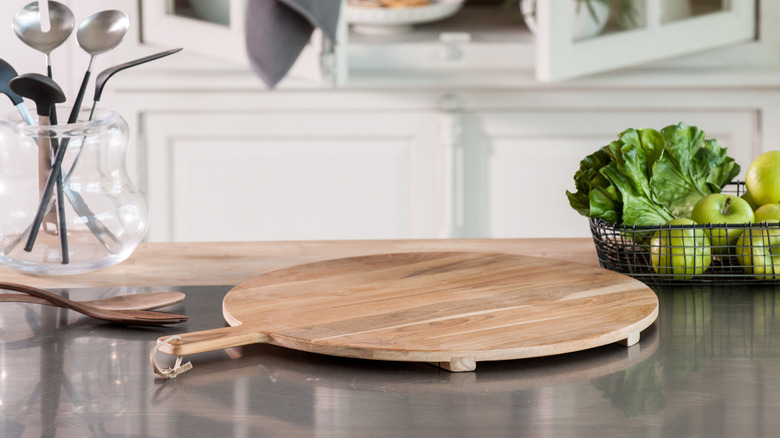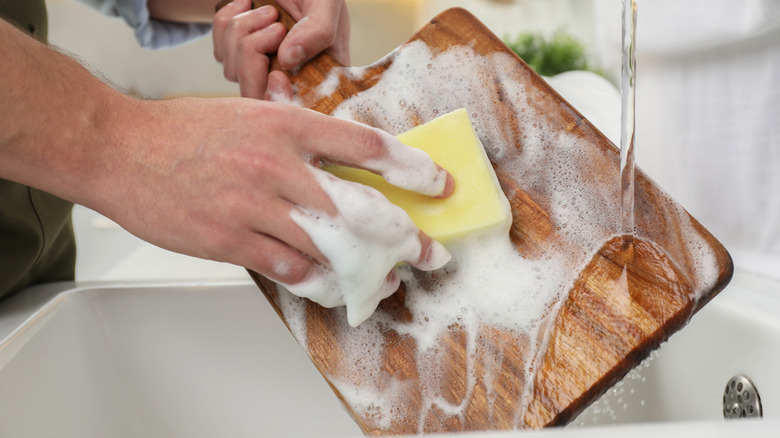Add This To Your Wooden Cutting Boards To Keep Them In Good Shape For Years
We may receive a commission on purchases made from links.
With so many people realizing that their plastic cutting boards could be making them sick and adding microplastics to their food, the switch to wooden cutting boards is a popular one. Simply using wood, though, won't solve all of your problems if you're not caring for the board properly. One way to make sure your cutting board lasts is to add some rubber feet to the bottom of it. The rubber feet will not only keep your wooden cutting board in place to help avoid any unnecessary slipping or accidents, but they will also allow for airflow underneath the board.
Airflow is especially helpful if the countertop is wet or if you've just rinsed your board. When a wooden cutting board soaks up moisture and isn't allowed to dry fully and promptly, it creates a more attractive environment for bacterial growth. It also leads to warping and separating. If it goes too long with this treatment, it'll eventually be time to throw your wooden cutting board out. However, the addition of rubber feet is a step in the right direction if you want to protect your kitchen investment — you can easily find rubber feet for cutting boards with stainless steel screws online.
More ways to care for your wooden cutting boards
Adding feet to your wooden cutting board is a great way to prevent accidents and to get the most life out of your board. However, it isn't the only way to ensure this kitchen essential is properly cared for. When you're done slicing and chopping your food, make sure you aren't cleaning your wooden cutting board wrong. After rinsing off any debris, you can clean your board with a gentle dish soap. Sanitize it with distilled white vinegar or even a diluted bleach solution if you prefer.
Before putting the board away, make sure it's completely dry. One way to make this part easier is to wash the board as soon as you're done with it and let it air-dry while you finish the rest of your cooking process. The best way to allow your cutting board to air dry is to stand it up and lean it against another surface so that both large, flat sides are getting ventilation. If you have a dish drying rack, place the cutting board in it upright so it can get proper airflow all around.
Keeping your board completely dry will prevent warping and bacteria, but it's also important to oil your board regularly as well. Make sure to oil your board every month or so (or more if you use it fairly often) with food-grade mineral oil to keep it in optimal condition. When storing your cutting board, stash it in a well-ventilated area, especially if your kitchen retains humidity. A properly cared for wooden cutting board will last for years, and you'll never miss your old plastic one.

